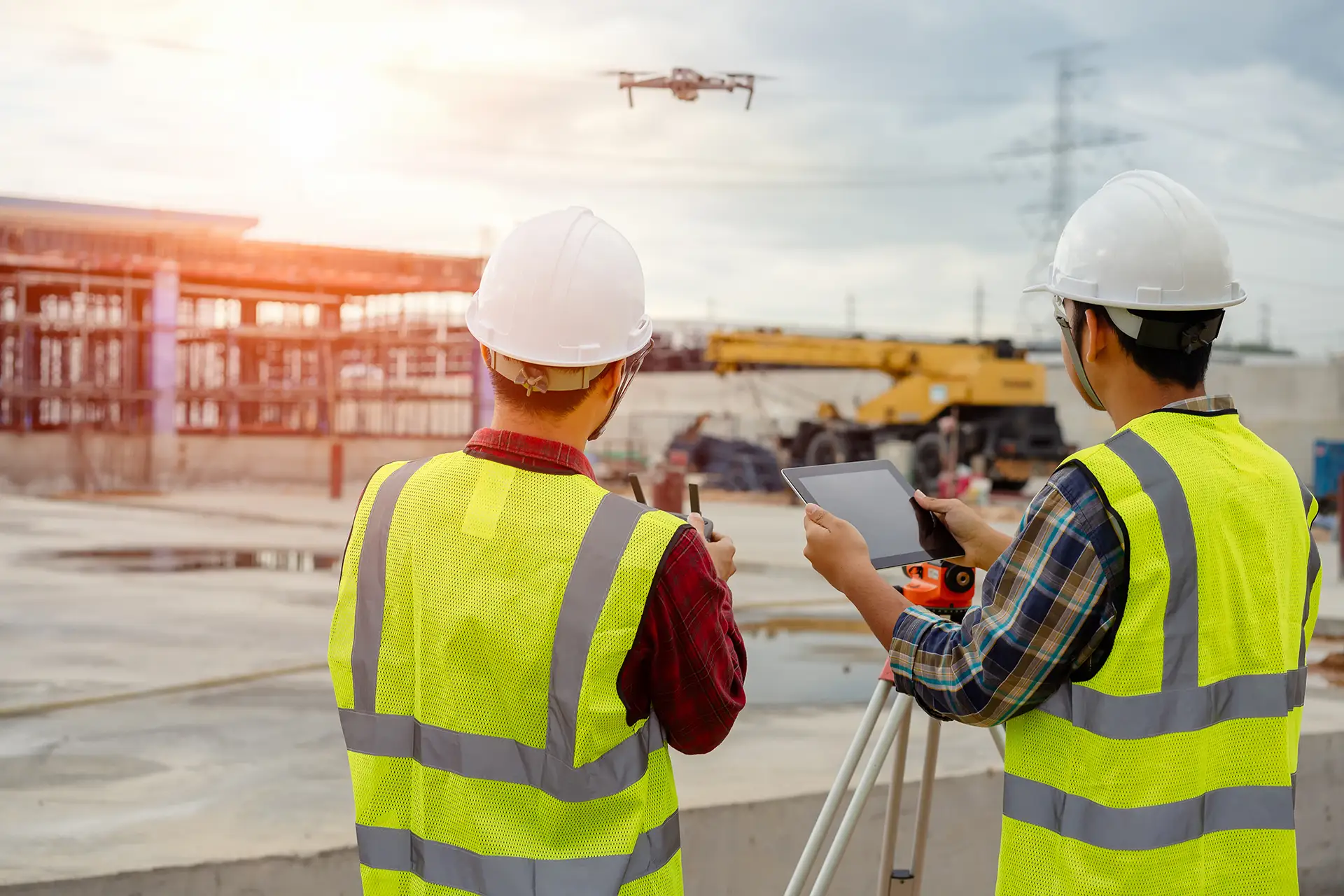
Last updated on April 7th, 2025
Among the many technologies driving advancements in our world, drones are highly transformative, especially when it comes to the construction industry and their ability to increase accuracy, promote safety, and improve efficiency. Drones or Unmanned Aerial Vehicles (UAVs) are remote-controlled, high-tech devices that have become invaluable when it comes to site surveys and mapping, inspections, 3D modeling, and more. Adding drone capabilities to your business offerings is easier than ever thanks to an ever-growing list of options and resources.
What drones can do for your business
Drones complete critical tasks in less time and at a fraction of the cost of traditional methods. This includes but isn’t limited to, site surveying and mapping, inspections, and 3D modeling.
Site surveys and mapping are time-consuming, labor-intensive activities that pose safety risks. Drones significantly mitigate these challenges. They provide a bird’s eye view of a construction site, capturing high-resolution images and videos. This aerial perspective enables companies to identify potential issues, measure distances, and assess the landscape while reducing the need for manual labor.
When it comes to inspections, a drone’s ability to reach inaccessible or dangerous areas is proving invaluable. Previously, inspectors had to physically climb structures, risking their safety to check the integrity of buildings. Now, drones equipped with advanced cameras, sensors, and GPS technology can inspect structures with improved accuracy and detail.
As for 3D modeling, by capturing multiple aerial images from different angles, drones allow businesses to create highly accurate models and maps and enable construction teams to assess terrain, plan layouts, and identify obstacles. As a result, issues are addressed, plans are adjusted, and resources are optimized before construction begins.
In addition, 3D models can be used for progress monitoring. By comparing a project’s current state with a model, construction companies can track progress, maintain schedules, and manage resources more effectively.
Undoubtedly, the use of drones in construction will continue to grow thanks to enhanced capabilities from integration with the Internet of Things (IoT) and Artificial Intelligence (AI). AI-powered drones can already perform tasks autonomously, analyze data, and predict potential issues. Meanwhile, the IoT enables real-time data sharing and analysis, facilitating better decision-making and project management.
Construction companies using drones attest to the fact that they save time and money while promoting safety. The majority of large construction companies already use them. While uptake among smaller construction businesses has been slower, it is growing and presents an opportunity to be more profitable and distinguish your business from its competitors.
Getting drone capabilities off the ground
How do you get a drone program off the ground? Start by learning more. There’s an abundance of information online. Plus, drone manufacturers post valuable information on their websites, discussing everything from drone features and capabilities to use cases and important considerations.
Going a step further, you may want to explore online classes or certificate programs available at a growing number of community colleges to help you (or someone on your team) prepare to earn certification to operate a drone (as required by the Federal Aviation Administration).
Consider defining how you would use drones in your business. Create a budget and prioritize the drone capabilities you want, as both will prove useful when you research which drone hardware and software will best meet your needs.
You may have a few options for operating a drone. Depending on what’s available in your area, you can have someone on staff get certified to operate the drone; subcontract a licensed drone operator; or contract with a business specializing in offering drone services for construction.
Make sure whoever you use is familiar with federal, state, and local laws governing the commercial use of drones. Some municipalities don’t allow them to be used at all (largely due to privacy concerns). Others have restrictions, such as how close they can be flown to land. Requiring ongoing training is one way to stay up to speed on changing drone regulations, technology, and capabilities.
Finally, as your drone program and capabilities take off, develop a standard operating procedure covering aspects like mission planning, flight operations, data management, maintenance, and emergency procedures to ensure operations run smoothly and safely.
Investing time to launch drone capabilities as part of your construction business can have big payoffs now and in the future. Now is as good a time as any to get started.
